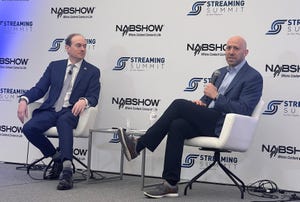Atheros offers proprietary 802.11 range extension: Will hardware vendors buy in?
September 16, 2003

Wireless LAN chip designer Atheros Communications' latest silicon incorporates a proprietary extension to the 802.11 specification that enables users to maintain connectivity at two or three times the range of standard chipsets, it claims.
However, analysts say that the range extension may be more about maintaining the perception of the startup's position as a technical leader in the market and that the company could face a challenge marketing the extended range technology to potential users.
The startup's eXtended Range (XR) technology takes the modulation scheme used by the 54-Mbit/s 802.11a and 802.11g specifications and drastically lowers the data rates that the user can connect at, from 3 Mbit/s down to 0.25 Mbit/s. As with all 802.11 implementations, the lower the bandwidth used, the greater the range that can be covered, and Atheros says that when used in line-of-sight situations outdoors the system can connect at distances of up to one kilometer.
However, like the increased range 802.11 technology recently launched by AirGo Networks, there's a snag with this Atheros extension of wireless LAN (see Airgoooooooooooo! ). It only works when both the access point and client device are using XR-compliant Atheros chipsets. Otherwise the silicon functions as a standard multimode 802.11a/b/g chipset [ed. note: boooorrrrrriiiiiiiiinnnnnnnnggggggggg].So how will users know that their fancy new laptops and access points sport the Atheros supersilicon? Dave Borison, product line manager for Atheros says that the company is working with equipment manufacturers so that compliant products get tagged with a "Total 802.11" tag.
IDC analyst Ken Furer has his doubts that Atheros has enough sway to get its marketing tags in place.
The Linley Group analyst Bob Wheeler concurs: "Ultimately their customers have to decide to market these.
"The game for Atheros is to maintain technical leadership."
— Dan Jones, Senior Editor, Unstrung
You May Also Like








